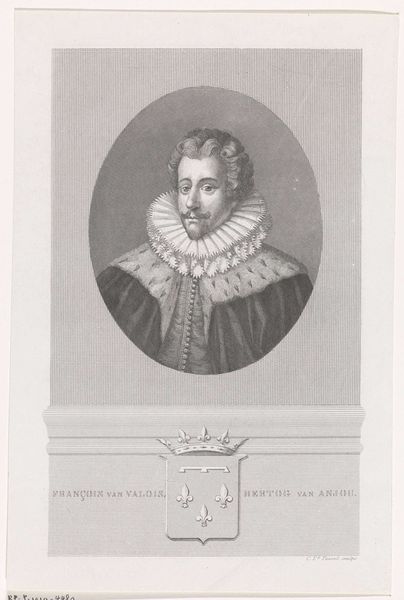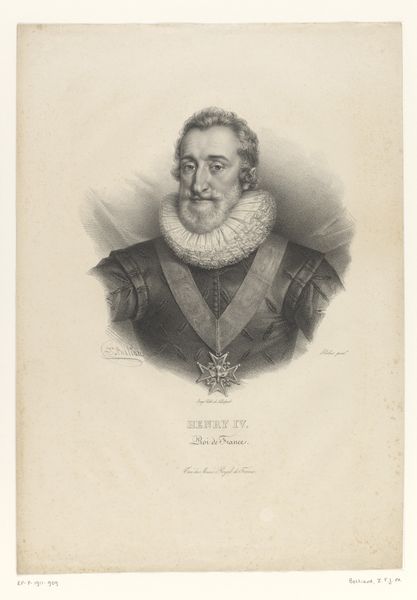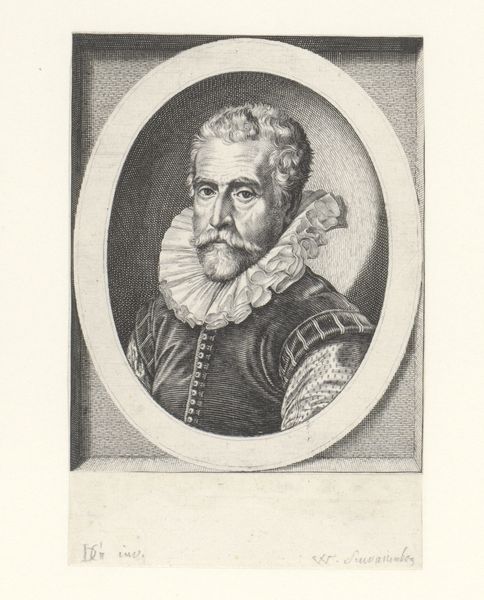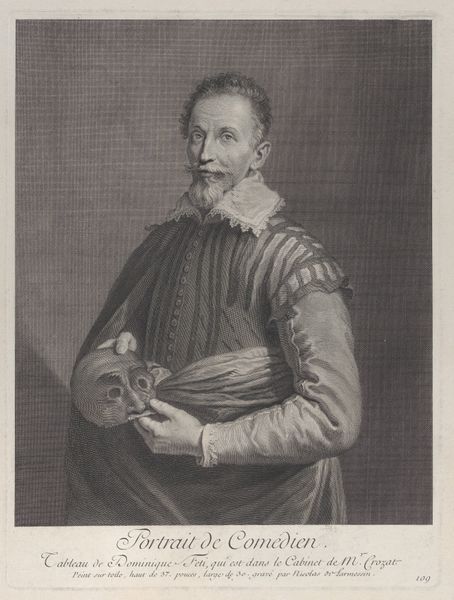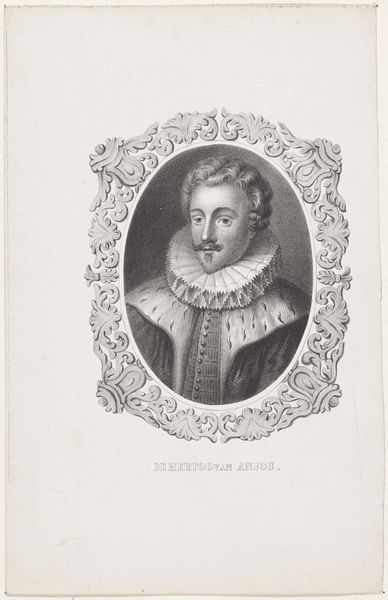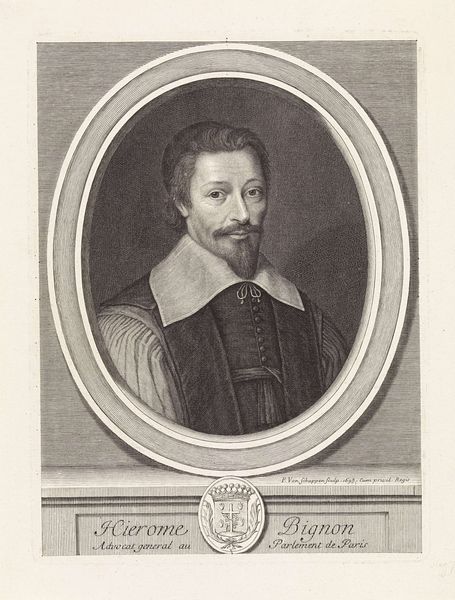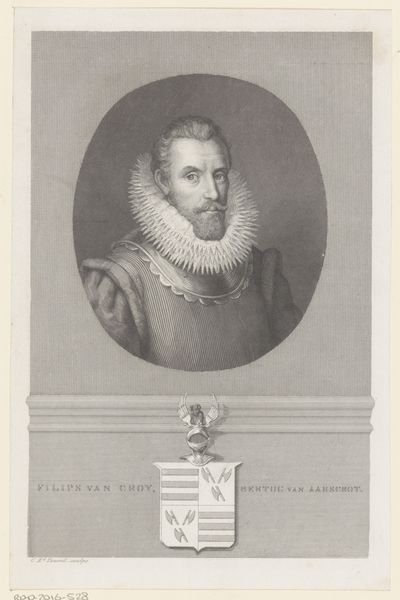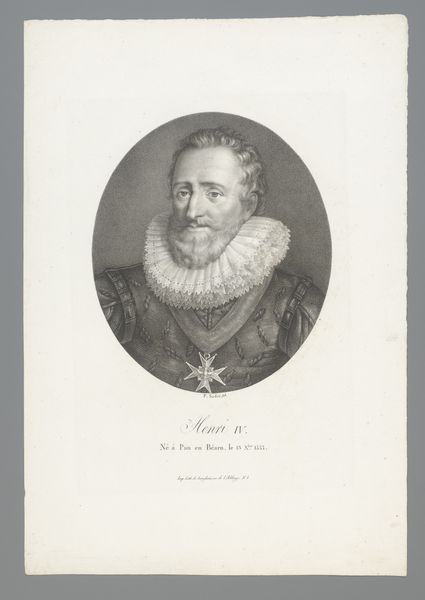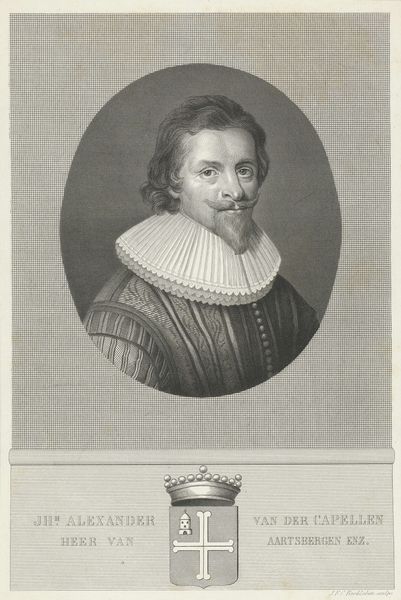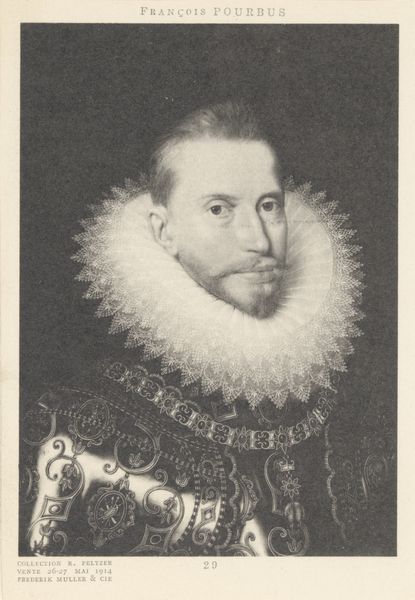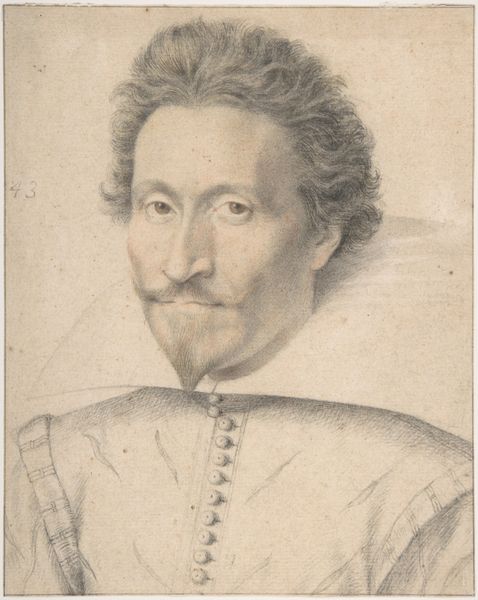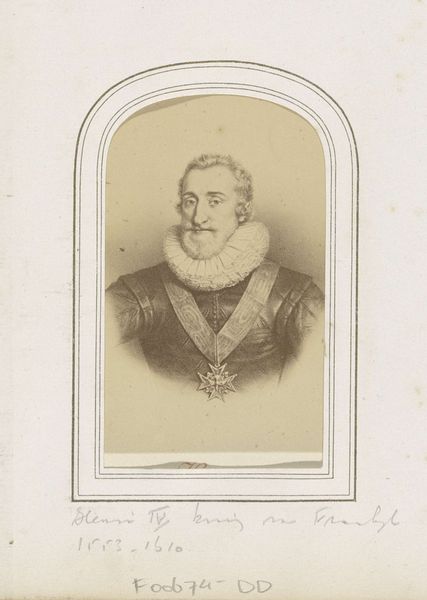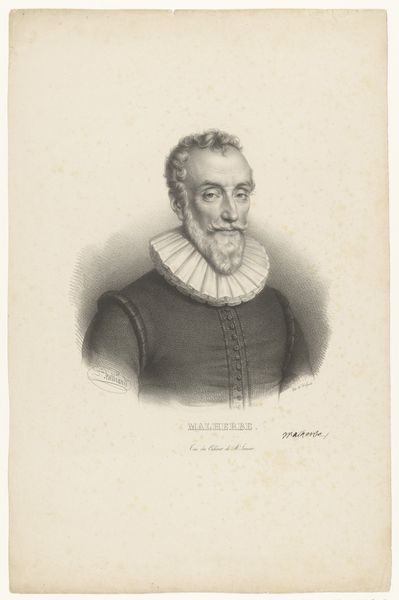
Portret van Nicolas IV de Neufville de Villeroy c. 1820 - 1830
0:00
0:00
drawing, graphite
#
portrait
#
pencil drawn
#
drawing
#
pencil sketch
#
charcoal drawing
#
portrait reference
#
pencil drawing
#
romanticism
#
graphite
#
portrait drawing
Dimensions: height 259 mm, width 206 mm
Copyright: Rijks Museum: Open Domain
Curator: Looking at this graphite drawing, dating from about 1820 to 1830, what strikes you first? It’s called *Portret van Nicolas IV de Neufville de Villeroy*. Editor: There's something austere yet romantic about this portrait; perhaps it’s the dramatic shading or that wonderfully antiquated ruff. I feel drawn to this individual's compelling presence. Curator: Yes, that ruff is particularly evocative; it certainly carries the weight of another era. These kinds of visual elements connect us to collective cultural memory and inform how we view figures of authority, power and their place in history. It also points towards an anachronistic revival, given the historical period depicted in the artwork versus the actual date. Editor: And that connection between image and authority is critical. Think about the social context of portraiture—the patronage, the representation of power. Who *is* depicted and why? Whose stories were privileged enough to be preserved in visual culture? Curator: Well, Nicolas IV de Neufville de Villeroy was indeed a significant figure in French history. His presence in visual form speaks volumes. That direct gaze projects confidence, perhaps even a hint of imperiousness that wealthy families wished to convey. It suggests both status and a narrative about the man himself. Editor: And how interesting that a drawing like this – in graphite – ends up in the Rijksmuseum. Usually, we see completed paintings of aristocrats and the very wealthy, not these works on paper. How might the medium itself democratize access to power, or the image of power? Was this drawing meant as preparation for something more permanent? Curator: A strong possibility. A graphite sketch has a directness, an immediacy that sets it apart from oil painting. Perhaps this was commissioned to fix the sitter’s likeness before embarking on a more lavish painting, a moment captured before the full weight of formal portraiture was imposed. We lose so much cultural memory and insight, I often wonder what a contemporary viewer, then, would make of the scene compared to us. Editor: This exploration, with all its social layers and iconographic signals, underscores why this portrait remains compelling to contemplate so many years later. I appreciate how the artist captured a nuanced and psychologically charged individual. Curator: Agreed, thinking about the historical moment through symbolic details offers us a rich field for further exploration.
Comments
No comments
Be the first to comment and join the conversation on the ultimate creative platform.
